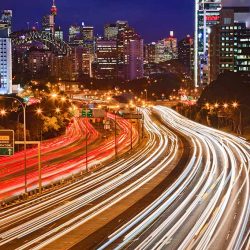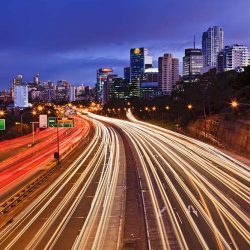Welcome to part two in our series which interprets the latest report released by the Department of Infrastructure and Regional Development, Transport and Australia’s Development to 2040 and Beyond.
In part one, we dove into the Australia’s current economic context and took a glance what will happen to Australian roads if no policy action is taken. If you missed it, here’s part one.
In this instalment, we’ll focus on the amazing opportunities in transport thanks to the rapid advancement in technology.
Technology, that’s what’s up
Rather than consorting with our crystal ball of assumptions, the report suggests the future of infrastructure and transport is best viewed through the lens of a smartphone. Digital connectivity has driven new business models, such as sharing economies such as Uber and Lyft. Around 40% of Australians have used a mobility app in the past 12 months – whether that be to ride share (Uber), renting a bike or rent a car for a short trip. Our connectedness has seen an uprising in advanced analytics, big data, drones, 3D printing and robotics and automation – in fact, robust robotic welding is a technology that The Drake Group have been using for some years to build our trailers with precision.
Advancing technology may seem scary for some, especially when it comes to job security, however, there are undeniable benefits to using more technology in the transport sector including:
- A reduction in the cost of infrastructure
- An improvement in the efficiency in the use of existing infrastructure
- Enhancing road safety
- Optimising freight safety
An example provided in the report on how technology can bring us closer to these benefits included:
- If inexpensive, internet-connected sensors installed in travelling devices (such as smart-phones) and fixed infrastructure such a street lights or traffic lights could be used to provide access to real-time, accurate traffic data, which could then be used to inform road management and planning activities.
This is not a far-fetched concept, with sensors and sophisticated data systems already being used on the Sydney Harbour Bridge to predict maintenance problems before they even occur. This tactic has reduced costs for larger problems and lowered disruptions on an already busy bridge.
Driving policy for a world without drivers
It’s also predicted that fully-automated, driverless cars will enter the market between 2020 – 2030, which could open an array of technologies including vehicle-to-vehicle communication, a rise in electric cars and more people utilising ride-sharing, which would have a positive effect on Australia’s road performance, but will likely disrupt traditional modes of transport. It touted that the driverless economy could significantly benefit mobility for the elderly, disabled, the young and free up parking space for better use of existing infrastructure.
As driverless technology begins to commercialise, it will be critical for the Australian Government to lay down clear outcomes for a growing transport ecosystem, whilst remaining adaptable and quick enough to leverage new and innovative ways to achieve this.
Automation brings manufacturing in-house
All business, not just those in the transport sector, will need to adapt because of automation. If businesses aren’t doing it already, logistic and manufacturing will likely merge thanks to technology like 3D printing. Vehicle manufacturers will be able to be produced on-site in the manufacturing facility, rather than them needing to be shipped from elsewhere.
Automation in transport will help to meet the greenhouse gas emissions reduction goal, which is up to 28% on 2005 level by 2030.
Adopting new and advanced technologies is just one of the factors in our success as trailer manufacturers. If you’re looking for a heavy haulage trailer, equipped with the latest in tried and tested safety technology, contact The Drake Group today.


